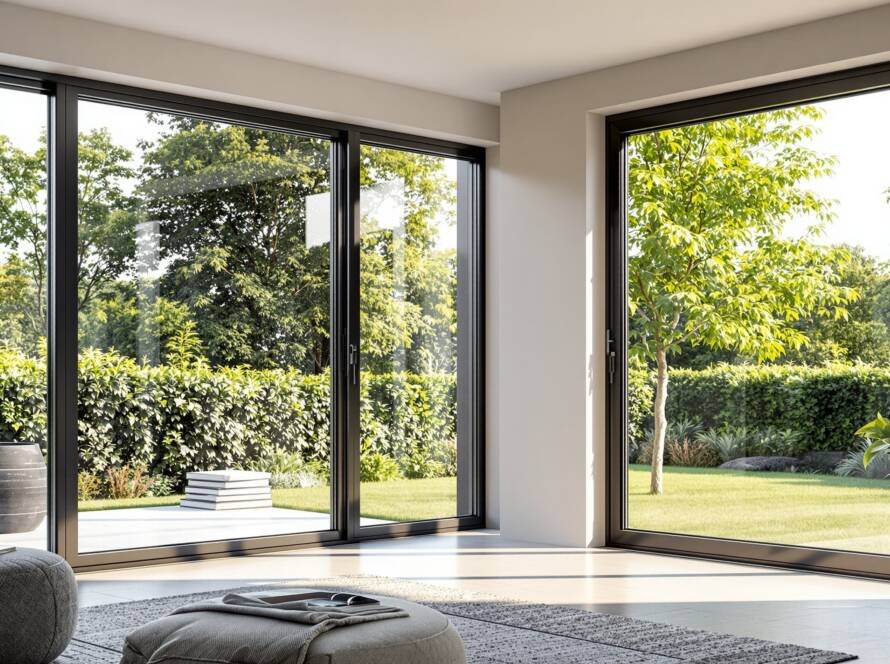Introduction
As the world becomes increasingly urbanized, the importance of connecting with nature has become a growing concern for homeowners in the Netherlands. Biophilic design, which emphasizes the integration of natural elements into building design, has gained popularity in recent years. In this article, we will explore the concept of biophilic design in Dutch homes, with a focus on windows and doors that bring the outdoors in. By incorporating natural light, ventilation, and views of nature, homeowners can create a healthier and more sustainable living space.
Basic Concepts
Before we dive into the specifics of biophilic design in Dutch homes, it’s essential to understand some key terms and concepts. Biophilia, which means “love of nature,” is the foundation of biophilic design. This approach to design recognizes the importance of nature in promoting physical and mental well-being. Some of the key elements of biophilic design include natural light, ventilation, views of nature, and the use of natural materials.
Benefits of Biophilic Design
Studies have shown that biophilic design can have numerous benefits for homeowners, including improved mental health, increased productivity, and enhanced overall well-being. By incorporating elements of nature into the design of a home, homeowners can create a sense of calm and tranquility, which can be especially beneficial in urban environments. Additionally, biophilic design can also improve the energy efficiency of a home, reducing the need for artificial lighting and heating and cooling systems.
Biophilic Window Designs in the Netherlands
Windows play a critical role in biophilic design, as they provide a connection to the outdoors and allow natural light to enter the home. In the Netherlands, there are several biophilic window designs that homeowners can choose from, including:
- Large windows and sliding glass doors that provide unobstructed views of nature
- Skylights and roof windows that bring in natural light from above
- Windows with integrated planters or green walls that incorporate natural elements into the design
When choosing biophilic windows, homeowners should consider factors such as energy efficiency, durability, and maintenance requirements. It’s also essential to select windows that are designed to withstand the Dutch climate, with its mild winters and cool summers.
Natural Light Windows in the Netherlands
Natural light is a critical element of biophilic design, and windows play a key role in bringing it into the home. In the Netherlands, homeowners can choose from a range of natural light windows, including:
- Double-glazed windows that provide excellent insulation and energy efficiency
- Triple-glazed windows that offer even better insulation and soundproofing
- Windows with specialized coatings that reduce glare and improve visibility
When selecting natural light windows, homeowners should consider factors such as the orientation of the window, the size and shape of the window, and the type of glazing used.
Dutch Nature-Inspired Doors
Doors are another essential element of biophilic design, as they provide a transition between the indoors and outdoors. In the Netherlands, homeowners can choose from a range of nature-inspired doors, including:
- Sliding glass doors that provide unobstructed views of nature
- French doors with large windows that bring in natural light
- Doors with integrated planters or green walls that incorporate natural elements into the design
When choosing nature-inspired doors, homeowners should consider factors such as energy efficiency, durability, and maintenance requirements. It’s also essential to select doors that are designed to withstand the Dutch climate, with its mild winters and cool summers.
Eco-Conscious Door Installations in the Netherlands
In addition to choosing eco-friendly doors, homeowners in the Netherlands should also consider the installation process. Eco-conscious door installations involve using sustainable materials and techniques to minimize the environmental impact of the installation. Some of the key considerations for eco-conscious door installations include:
- Using locally sourced materials to reduce transportation emissions
- Minimizing waste and recycling materials whenever possible
- Using energy-efficient installation techniques to reduce energy consumption
By choosing eco-conscious door installations, homeowners can reduce their environmental footprint and create a more sustainable living space.
Practical Tips for Biophilic Design in Dutch Homes
For homeowners in the Netherlands who want to incorporate biophilic design into their homes, here are some practical tips:
- Start by assessing your home’s natural light and ventilation
- Choose windows and doors that provide unobstructed views of nature
- Incorporate natural materials and elements into your design
- Consider using green walls or planters to bring in natural elements
By following these tips, homeowners can create a biophilic design that promotes physical and mental well-being, while also reducing their environmental footprint.
Conclusion
In conclusion, biophilic design is an essential element of creating a healthy and sustainable living space in the Netherlands. By incorporating natural light, ventilation, and views of nature into the design of a home, homeowners can promote physical and mental well-being, while also reducing their environmental footprint. Whether you’re building a new home or renovating an existing one, biophilic design is an essential consideration. By choosing biophilic window designs, Dutch nature-inspired doors, and eco-conscious door installations, homeowners can create a living space that is both beautiful and sustainable.




